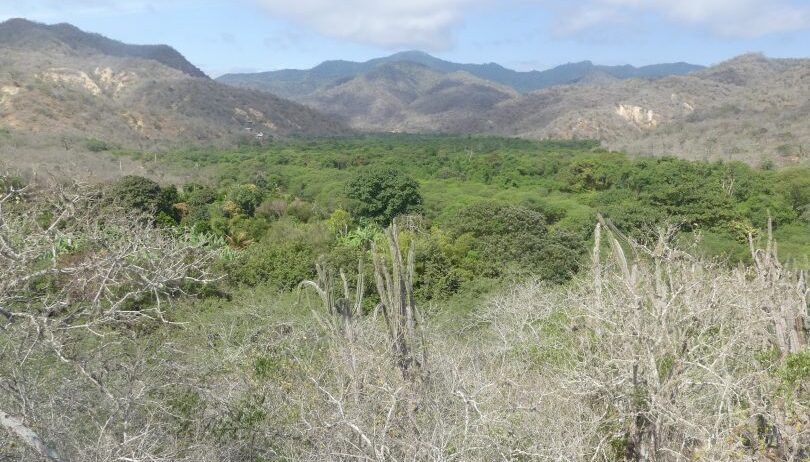Ecuador is a nation straddling the equator, nestled between the Andes mountain range and the Pacific Ocean. Its geographical location contributes to a diversity of climates, presenting an intriguing study in meteorological contrasts. This small, biodiverse country offers an array of climatic conditions which can be somewhat complex due to its varied topography. Understanding the climate in Ecuador is essential not only for travelers but also for those concerned with environmental change and sustainability.
As one traverses the nation, one quickly discovers that Ecuador’s climate is predominantly dictated by two major factors: equatorial elevation and the moist influences of the Amazon rainforest. The country may be small in size, but its climatic zones are substantial, ranging from tropical on the coast to cold and temperate in the highlands. This unique amalgam of climate types provides fertile ground for a rich array of flora and fauna as well as diverse agricultural activities.
The equator bisects Ecuador, which holds significant implications for temperature and weather patterns. This geographic reality means that the country experiences a generally mild temperature variation year-round. Days are warm, typically ranging from 21°C (70°F) to 26°C (79°F) in most regions; however, nocturnal temperatures can plummet, especially in the highland areas where temperatures can dip to as low as 5°C (41°F) at night. Thus, Ecuador exhibits what is known as a tropical highland climate, providing a duality of warmth during the day while cooling down significantly in the evening.
The Andes mountains further exacerbate this climatic dichotomy. Due to the altitude, regions within the Andes experience temperature shifts that lead to microclimates. At higher elevations, one may find snow-capped peaks and glaciers, while just a few kilometers below, resilient ecosystems thrive in climatic conditions that can vary dramatically. This altitude-driven temperature gradient creates an environment where condors soar freely above and cloud forests flourish at mid-elevations, revealing a microcosm of biodiversity.
Conversely, the eastern slopes of the Andes descend into the Amazon basin, where moisture-laden winds sweep in from the Atlantic Ocean. As these winds collide with the mountainous terrain, they rise and cool, causing the condensation of moisture into rain. This intricately woven interplay between altitude and moisture gives rise to one of the most biodiverse regions on the planet— the Amazon rainforest. Here, precipitation is abundant, averaging 3,000 mm (118 inches) annually, which sustains an astonishing variety of species found nowhere else on Earth.
The rainy seasons in Ecuador showcase further nuances within the climate. Coastal regions generally have two primary rainy periods, from December to April and a shorter surge from May to August. The highlands exhibit a slightly different pattern with rain peaking during the months from October to May. While the Amazon basin is temperate, it is characterized by virtually perpetual rainfall, making it a lush, verdant paradise.
In stark contrast, the coastal region and the Galapagos Islands can experience arid conditions, especially from June to November, marked by a phenomenon known as the Garúa or “mist” season. During this period, low-hanging clouds envelop the coastline, leading to cooler temperatures and a reduction in direct sunlight. This phenomenon significantly impacts the coastal ecosystems, influencing both terrestrial and marine biodiversity.
Moreover, the climatic complexity within Ecuador provides fertile ground for various agricultural activities, which are not only crucial for food production but also reflect the environmental challenges that the country faces. The diverse climatic zones allow for the cultivation of numerous crops, such as bananas, cocoa, and coffee, which thrive specifically in the warm, moist conditions of the coastal and Amazonian regions. Yet, these agricultural practices are increasingly threatened by climate change, which has resulted in unpredictable weather patterns, droughts, and floods.
As climate variability begins to take hold across the nation, farmers are confronted with the daunting challenge of adapting their traditional farming methods to secure their livelihoods while maintaining sustainable practices. This is particularly evident in the highland regions, where changing climate conditions are leading to soil degradation and crop loss, threatening food security for local communities.
In terms of environmental activism and climate change awareness, it is critical to highlight the importance of Ecuador’s rich ecosystems as they hold intrinsic value beyond mere economic benefit. The Amazon rainforest plays a pivotal role in carbon sequestration, significantly impacting global climate. The conservation of such biodiversity hotspots is not only beneficial for the local communities but also essential for the entire planet, as they mitigate the adverse effects of climate change.
The future of Ecuador’s climate is intertwined with both its natural resources and its people. By fostering a deeper understanding of the climatic conditions prevalent in this ecologically precious region, a collaborative approach can emerge, bridging the gap between environmental stewardship and sustainable development. Thereby, Ecuador can serve as a beacon of hope in the face of climate change challenges, championing ecological resilience amidst its expansive, diverse landscapes.
In conclusion, Ecuador’s climate, influenced by equatorial dynamics and the moisture of the Amazon, represents an extraordinary study in contrasts. As we navigate the challenges posed by climate change, insight into these climatic realities is essential for preserving not only Ecuador’s unique ecosystems but also the planetary health as a whole. By advocating for sustainable practices and fostering a climate-resilient society, we hold the potential to mitigate the impacts of climate change and safeguard our environmental heritage for generations to come.







